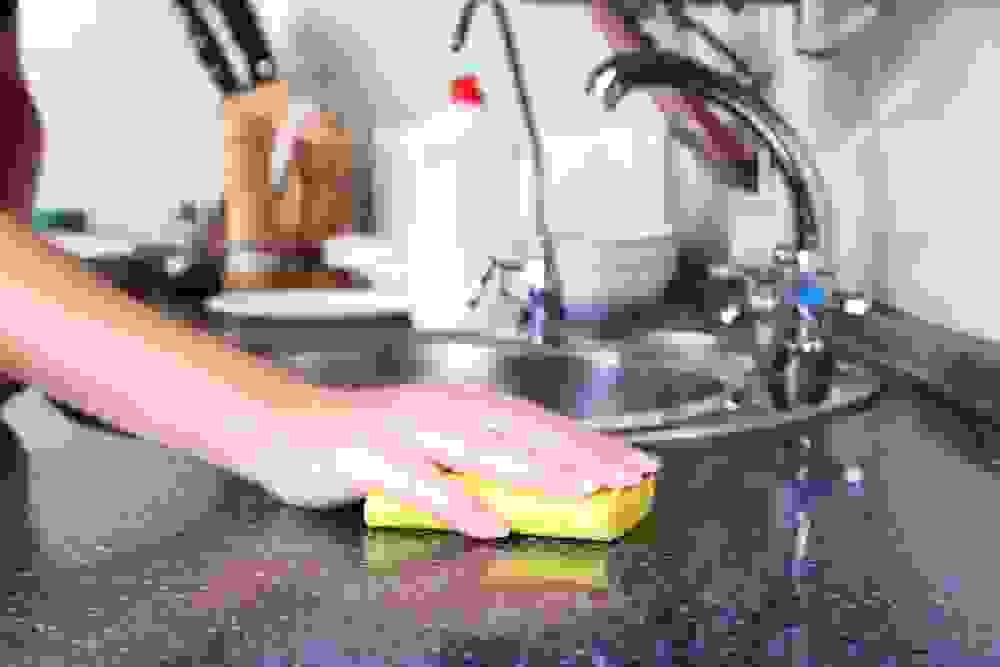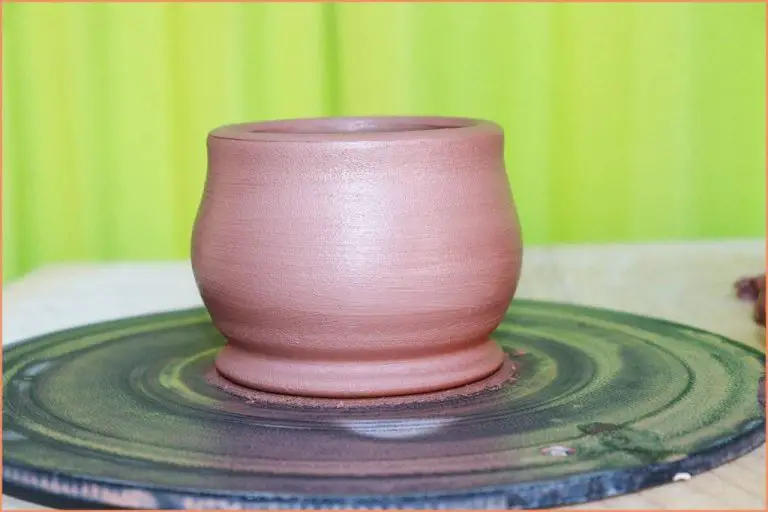How Many Times Can You Use A Large Soft Sponge?
As a staple in so many kitchens, sponges play an integral role in cleaning dishes, countertops, appliances, and more. But with frequent use comes the accumulation of food particles, oils, grease, bacteria and mold. This begs the question: how often should you be replacing your sponges?
With some kitchen sponges hosting more germs than you might find in a petri dish, it’s crucial to know when it’s time to toss them in the trash. Replacing them regularly is key to maintaining a sanitary kitchen environment.
In this article, we’ll dive into the factors impacting sponge lifespan, signs it’s time for a new one, and tips to safely extend use. We’ll also touch on environmentally-friendly alternatives. By the end, you’ll know exactly how many times you can use a sponge before needing to swap in a fresh one.
Sponge Materials
Sponges can be made from a variety of materials including cellulose, polyurethane foam, and natural sea sponges. Cellulose sponges are made from wood pulp and plant fibers [1]. The cellulose is extracted from the wood pulp and then combined with other ingredients to create the sponge material. Polyurethane foam sponges are made by combining polyols and diisocyanates along with other ingredients [2]. The reaction of these chemicals produces the polymer that makes up the sponge. Natural sea sponges come directly from marine animals found in the ocean. They consist of a matrix of collagen fibers and spongin protein [2].
Sponge Structure
Sponges can be classified into two main types based on their internal structure: open cell and closed cell. Open cell sponges, like a typical kitchen sponge, have pores that interconnect freely and allow air, water and particles to pass through easily. Closed cell sponges have discrete closed cells that trap air inside and prevent the free-flow of liquid and particles (https://silicone.co.uk/news/difference-open-closed-cell-silicone-sponge/).
Open cell sponges are soft, compressible and breathable. They absorb and release liquids readily. Closed cell sponges are firmer, springier, less absorbent and provide more insulation. They resist compression and retain their original shape (https://www.quanex.com/news/open-cell-vs-closed-cell-sponge-rubber/).
Understanding the internal structure of a sponge can help determine the best applications for it and how to care for it properly.
Factors Affecting Sponge Lifespan
There are several key factors that impact how long a sponge will last before needing to be replaced:
Cleaning products used – Harsher cleaning products like those containing bleach or ammonia will degrade a sponge more quickly. Using milder soaps or detergents extends a sponge’s lifespan. According to Britannica, some sponge species can live for over a year in the right conditions.
Cleaning frequency – Frequent use and cleaning wears down a sponge faster. Letting a sponge fully dry out between uses gives the cells a chance to recover and lengthens its usable life.
Storage – Keeping sponges in a cool, dry place preserves them better than leaving them in humid environments or direct sunlight, which promotes mold growth.
Signs Your Sponge Needs Replacing
There are a few key signs that indicate it’s time to replace your kitchen sponge:
Odor – If your sponge starts to give off a sour, musty, or unpleasant smell, that’s a telltale sign of bacteria buildup. Bacteria thrive in the moist environment of a sponge, and the smell is caused by the bacteria breaking down organic matter trapped in the sponge. According to Martha Stewart, if your sponge has any sort of funky or sour smell, it’s time to replace it [1].
Tearing – Sponges can start falling apart after repeated use and cleaning. Tiny tears and holes in your sponge provide more nooks and crannies for bacteria to multiply. Once your sponge starts disintegrating, it’s better to replace it with a fresh one.
Staining – Stains on your sponge that don’t come out even after cleaning are another red flag. Staining indicates your sponge has absorbed a lot of gunk, grease, and dirt over time. A stained sponge is probably past its prime and ready for retirement [2].
Maximizing Sponge Lifespan
Properly cleaning, disinfecting, and allowing your sponge to dry completely between uses can help maximize its lifespan. The key is to prevent mold and bacterial growth, which slowly breaks down the sponge fibers over time. Here are some tips for getting the most use out of your sponge:
Disinfect sponges regularly in the microwave or with a diluted bleach solution. Microwaving a damp sponge for 1-2 minutes can kill up to 99% of bacteria, viruses, and mold [1]. Soaking in a diluted bleach solution of 1 teaspoon bleach per 1 cup of water for 5 minutes also sanitizes sponges. Be sure to rinse thoroughly after disinfecting.

Allow sponges to dry completely between uses. Bacteria thrives in the moist environment inside a damp sponge. Letting sponges dry out on a dish rack or hanging dry can prevent mold and bacterial growth [2].
Replace sponges often. About every 2-3 weeks is ideal for kitchen sponges to prevent buildup of grime and germs.
Environmental Impact
Conventional sponges, especially those made of polyurethane foam, contribute to microplastic pollution in waterways. As the sponges break down from repeated uses, tiny plastic particles wash down household drains and eventually end up in lakes, rivers and oceans (source1). Studies estimate a typical sponge sheds over 5,000 microplastic particles per use (source2). The tiny plastic bits are then ingested by marine animals and enter the food chain.
To reduce the environmental impact, consider reusable options like cellulose sponges made from plant fibers or loofah sponges. These biodegradable materials break down naturally without releasing microplastics. Stainless steel sponge scrubs and silicon dish brushes are other reusable alternatives. Limiting use of conventional sponges to 4-6 weeks can also help cut down on microplastic shedding. Properly disposing of worn out sponges in the trash, rather than the drain, prevents more plastic from reaching waterways.
When to Replace
Kitchen sponges should be replaced every 1-4 weeks for average use. Though recommendations vary, most experts agree replacing them every 1-2 weeks is ideal for basic cleaning tasks.
Martha Stewart recommends replacing sponges every week to two weeks, noting that even well-sanitized sponges harbor bacteria over time. According to Martha Stewart, signs your sponge needs replacing include a foul odor, slimy texture, and visible buildup.
An experiment by the U.S. Department of Agriculture found 70% of sponges tested positive for coliform bacteria after just two weeks of use. Based on this data, the USDA recommends replacing sponges every 1-2 weeks. More frequent replacement, every 1 week, is suggested for households with children or immunocompromised individuals.
While sponges can technically be used longer, sticking to a 1-2 week replacement cycle helps minimize harmful bacteria that can spread illness. Ultimately, inspecting your sponge and replacing it more frequently if signs of buildup appear is the best way to determine replacement needs.
Alternatives
As environmental awareness increases, many people are looking for reusable alternatives to single-use sponges that can help reduce waste.
Some popular reusable options include:
- Reusable sponges: These come in materials like silicone, plastic, or plant-based cellulose. They can last for months with proper care and cleaning [1].
- Loofahs: These natural sponges come from the fibrous interior of luffa plants. They are compostable at end of life [2].
- Dishcloths: Cloths made of cotton, microfiber, or other materials provide scrubbing power and are machine washable. Look for textured weave for scrubbing dishes [3].
With some trial and error, reusable sponges can become a zero-waste alternative to daily single-use sponges.
Conclusion
To summarize, the lifespan of a sponge depends on several factors like material, frequency of use, proper care and maintenance. With the right sponge material, gentle usage, thorough cleaning and drying between uses, and periodic inspection for signs of wear, a quality sponge can typically last up to a few months. However, it’s best to err on the side of caution and replace sponges every 1-2 months to prevent buildup of bacteria. Using dishwasher-safe sponges and boiling regularly can prolong lifespan as well. Ultimately, inspecting your sponge and replacing when worn, discolored or smelling is the best practice. With proper care, you can maximize usefulness while minimizing waste and germs.



